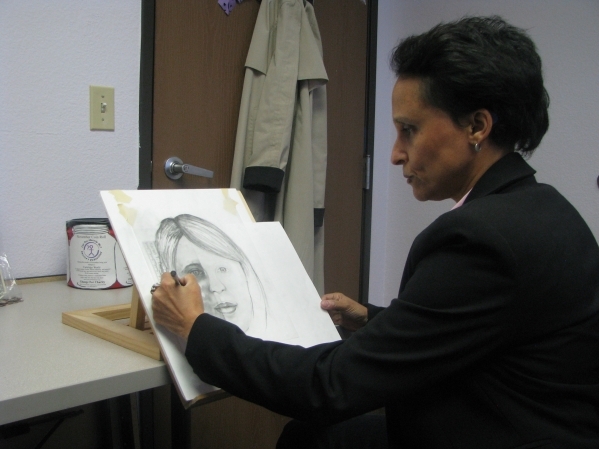Forensic artist lends talents to local nonprofit to help ID missing persons
It isn't easy to make a living as a fine artist, but Jane Billingham has had enough success in the field that she donates about two or three months of her time and talent each year to bring the dead back to life.
Billingham is a forensic artist, and she uses her skills to extrapolate a skull into a fully fleshed person in the hope that someone will be able to identify the result and put a name to the corpse.
"In a lot of cases, the body I'm working on was murdered," Billingham said. "Until we know who they are, we may not be able to bring the murderer to justice."
She has been doing art since she was a teen, but in 2010, she attended a workshop on police composites because she wanted to expand on her work as a portrait artist.
"I asked myself, 'What am I doing here?', " Billingham said. "Everyone else in the workshop were police officers, but I did really well and realized that's where I wanted to be."
Her forensic work in Las Vegas is done as a volunteer with Can You Identify Me?, a local nonprofit that seeks to connect John and Jane Does with missing persons.
Rebel Morris, founder and executive director of Can You Identify Me?, was delighted when she met Wolverhampton, England-based Billingham and asked her to help her organize and coordinate forensic artists for the organization. Billingham comes to Las Vegas two or three times a year for hands-on training and coordination.
"We've been so lucky to have Jane," Morris said. "She showed up at just the right time, and she's really helped us to make a difference."
When a case comes in, Billingham ascertains if the coroner is looking for a 2-D or 3-D reconstruction. More often than not, it's 2-D, which can take a few hours, versus a 3-D reconstruction, which can take several days.
"With a 2-D reconstruction, we have a photo or several photos, and we follow the bony architecture and work out the flesh from there," she said.
With a 3-D reconstruction, Billingham starts with the deceased's actual skull. In most cases, that skull has already been thoroughly examined and cleaned by a medical examiner, but not always. In some cases, the final cleaning falls to the forensic artist. The next step is to place tiny discs of of material at specific heights on specific points on the skull. Morris uses pieces of eraser carefully cut to length. These markers let the artist know how high to build the clay to capture a likeness of the person when they were alive.
"Artists don't generally have a lot of anthropological knowledge, so we hope that some of that has been worked out before," Billingham said. "The marker heights will change depending on ancestry."
Another issue is weight. If a forensic artist is working with skeletal remains, there may be little or no way of figuring out the weight of the deceased. Hair can be somewhat easier. Morris bases it on popular styles for the time and place the body was found.
Despite all of these challenges, Billingham said forensic artists have phenomenal success.
"If a case lands on my desk, they've gone through all the traditional efforts of fingerprinting and DNA to try to get this person identified," Billingham said. "They've exhausted everything, and we're the last resort."
Because of that, the chances of identifying a person goes from practically none to much more likely, but it's hard to quantify an individual's contribution to the solution because everyone involved is a small part of a bigger machine.
"It's very rare that a forensic artist gets credit for solving a case," Billingham said. "We're way in the background."
Billingham recently gave a public demonstration of her work at the Mob Museum, 300 Stewart Ave., and plans to return in a few months to volunteer her services again. By that time, Morris and her volunteers at Can You Identify Me? will have dug up a few more cases for her to work on, and Billingham looks forward to the challenge.
"It can be a gruesome job sometimes," she said. "But I find it really rewarding. It's a chance to make a difference and bring some closure to families, and sometimes, even bring a murderer to justice."
Visit canyouidentifyme.org or call 702-866-9755. To see more of Billingham's work, visit tinyurl.com/hfewmyx.
— To reach East Valley View reporter F. Andrew Taylor, email ataylor@viewnews.com or call 702-380-4532.
Can You Identify Me?
For more information on the nonprofit Can You Identify Me?, visit canyouidentifyme.org or call 702-866-9755.
To see more of Jane Billingham's work, visit her website.


















